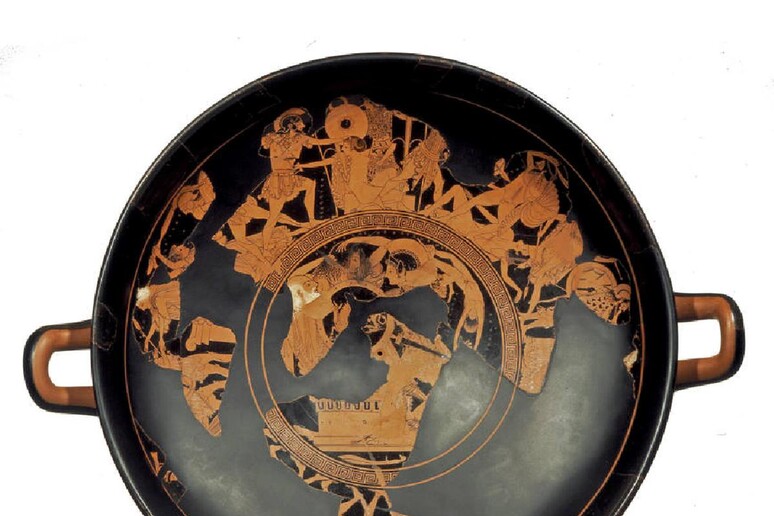Rome - After 40 years and much mystery, an ancient Greek drinking cup - made by the celebrated ceramic artist Euphronios - has come home to be put on show in Cerveteri, a town 50 km northwest of Rome where it was excavated from a necropolis in the 1980s.
The fifth-century BC Attic red-figured kylix, or ancient Greek long-stemmed shallow wine cup, is signed by Euphronios as potter and painted by his colleague Onesimos with scenes of the Trojan War. It will take centre stage in the exhibit "Euphronios' Cup: A World Heritage" from May 8 to July 20 at Cerveteri's Caerite National Museum in a show celebrating the inclusion of the town's necropolis in the UNESCO World Heritage List. The kylix was returned to Italy by the J. Paul Getty Museum in Los Angeles in 1999, after the museum was informed that it had been illegally trafficked out of Italy. Euphronios pioneered the red-figure technique in Athens from about 520 to 470 BC, and his kylix narrates the most salient scenes of the Trojan war, from Neoptolemus, the son of Achilles, slaying Priam and the child Astyanax while a grief-stricken Polyxena looks on, to the liberation of Aithra, to a duel between Ajax and Hector, to Patroclus taking the slave Briseis to Agamemnon. The foot of the kylix bears an Etruscan dedication to Heracles.
Coming in September to the same museum will be another masterpiece known as the Euphronios krater, or bowl used for mixing wine with water. Created around the year 515 BC, it is the only complete example of the surviving 27 vases painted by Euphronios and possibly one of the last he made before failing eyesight forced him to give up vase painting altogether.
Considered one of the finest Greek vase artifacts in existence, it was trafficked out of Cerveteri and sold by art dealers Robert Hecht Jr. and Giacomo Medici to the Metropolitan Museum of Art in New York for one million dollars in 1972. The krater was repatriated under an agreement negotiated in 2006. The krater and the kylix are now part of the collection of the National Etruscan Museum, in the Villa Giulia in Rome.
Currently, the krater is on view at the presidential Quirinale palace in Rome in a show titled "Classicism and Europe. The destiny of Greece and Italy", through July 15.
"This is an exceptional moment for Cerveteri, the original homeland of these two masterpieces", said Mayor Alessio Pascucci, who will present the kylix at the exhibit opening Thursday. The kylix was excavated from a necropolis from 1983 to 1985 and sold to the Getty Museum in fragments - perhaps for greater profit. It was returned to Italy 15 years ago after its origin was betrayed by the alphabet characters of the dedication, typical of Caere, the southern Etruscan city that preceded Cerveteri, and fragments that matched others found at the archeological site.
ALL RIGHTS RESERVED © Copyright ANSA











